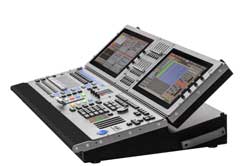
“That is one of the toughest tricks to pull off,” he states.
Using generic lights with martin mpc license#
But when Buck goes into the wilderness, it becomes The Lion King without the talking, no plates whatsoever, just virtual environments, so we had license to tailor the lighting to taste.”Īnother issue Nash addressed early on was the matter of depicting credible exteriors captured on stage. When Buck is around Thorton’s cabin, we were limited to the real Southern California daylight plates, and we would match our CG set extensions and environments, using HDRs from location to help light the dog.
Using generic lights with martin mpc movie#
“Sixty percent of the movie wound up with humans interacting with the dog,” says Nash, “and that is mainly plate-based. We had real-time visualizations of how our sets would be, and the art department worked together with a virtual one to build tools that worked in both live-action and virtual production formats.” Halon also provided previs and postvis services.īoth Stafford and Nash were concerned about finessing the disparate approaches taken for most of the film. “After getting that in a very crude, low-rez fashion, we’d shoot virtual cameras, using the Unreal Engine as our backbone. “Glenn was very instrumental in the early days, when Fox gave us the mission to previs the whole film.” Every scene, be it populated by man or beast, was staged by mocap within a capture volume.

Infrastructure for supporting this effort came from The Fox VFX Lab “It had just been developed and was intended to be a virtual production sandbox for filmmakers to develop content,” says Stafford.

That let us build a world for the movie before shooting a frame.” “It made sense to use a lot of virtual production tools and pipeline for early development. “The plan was always for a hybrid film, so at that point it was a 50/50 split between live-action and CG,” Stafford explains. “As I dove into making a financial and strategic plan, I met and hit it off with the filmmakers, so I was part of the greenlight packages presented to Fox.” He recalls that at this point, a couple sequences had already been developed as pitchvis.

VFX Producer Ryan Stafford was finishing up War for the Planet of the Apes when he received the Wild script.


 0 kommentar(er)
0 kommentar(er)
